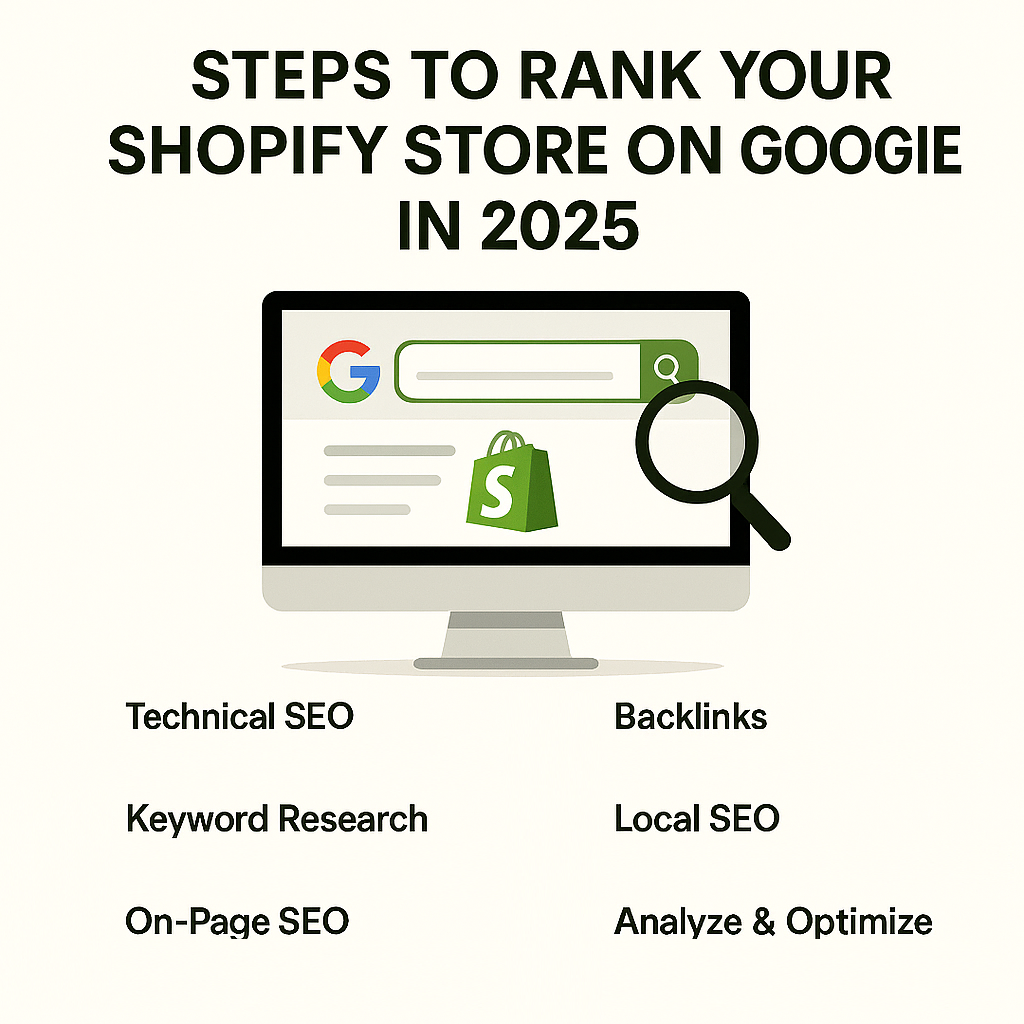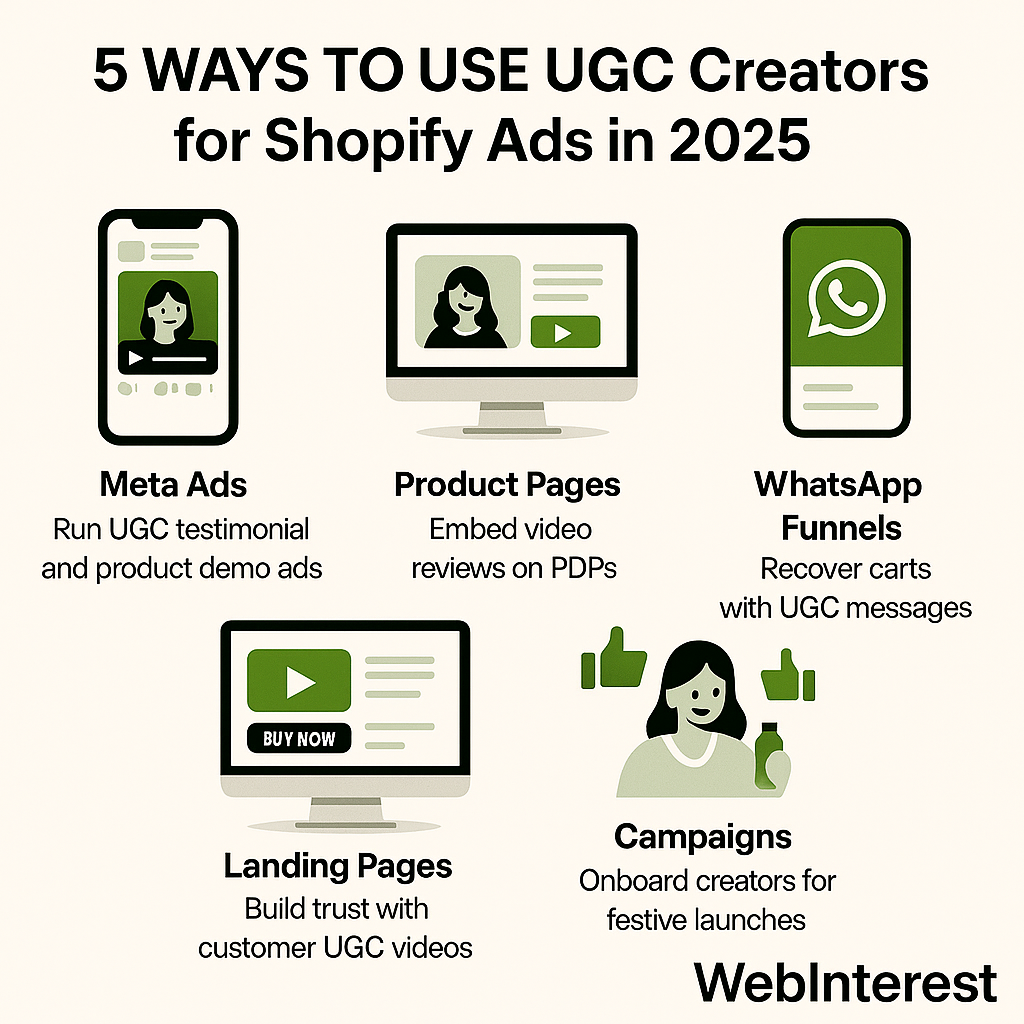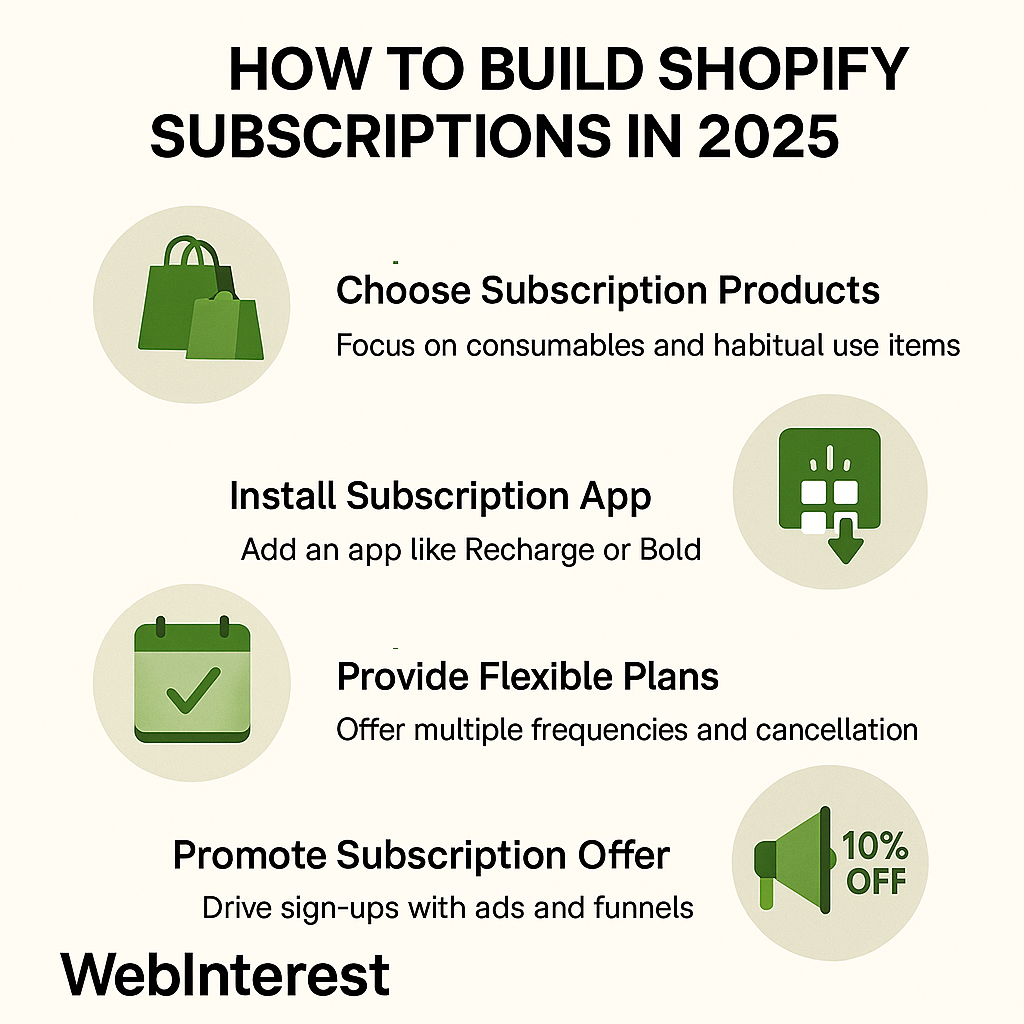
Shopify SEO Playbook: How to Rank Higher on Google Without Paid Ads
For Indian D2C brands, ads are often the first growth channel. But with rising CPMs and increasing competition, paid campaigns alone cannot guarantee profitability. The real long-term growth engine is SEO (Search Engine Optimization)—ranking organically on Google so customers find you without you paying for every click.
At WebInterest, we help Shopify brands build SEO strategies that generate consistent organic sales. This blog shares the complete Shopify SEO Playbook for 2025, tailored for Indian eCommerce.
Why SEO Matters for Shopify Brands
-
Cost Efficiency: Unlike ads, SEO drives free traffic once rankings are established.
-
High Intent Buyers: Google searchers are actively looking to buy.
-
Long-Term Asset: An optimized blog or product page can bring traffic for years.
-
Competitive Edge: Most Indian D2C brands underinvest in SEO—giving you an advantage.
Step 1: Technical SEO Foundation
Before scaling SEO content, your Shopify store must be technically sound.
Checklist:
-
Mobile-first design (80%+ of Indian traffic is mobile).
-
Fast load speed (under 3 seconds).
-
Clean URL structures (use /collections/ and /products/ properly).
-
Submit XML sitemap to Google Search Console.
-
Ensure SSL security (HTTPS).
At WebInterest, we run complete SEO audits for Shopify stores before content planning.
Step 2: Keyword Research for Indian Audiences
Not all keywords are equal. Focus on buyer-intent keywords.
Examples:
-
Instead of “best shoes,” target “buy kids sports shoes online India.”
-
Instead of “coffee,” target “organic filter coffee powder Delhi.”
Use tools like Google Keyword Planner, Ubersuggest, or Ahrefs. Always mix short-tail (shoes, coffee) with long-tail (buy diabetic atta online in Delhi).
Step 3: On-Page SEO Optimization
Every product and collection page must be optimized.
Best Practices:
-
Write unique meta titles and descriptions with keywords.
-
Use H1 tags for product titles and H2 tags for benefits/features.
-
Add alt text to all product images.
-
Include FAQ sections on product pages for voice search optimization.
Example for a footwear brand:
Meta Title: Buy Comfortable Sports Shoes for Kids Online – MyAu.in
Meta Description: Shop lightweight, durable kids’ sports shoes online at MyAu. Free delivery across India. COD and prepaid options available.
Step 4: Blogging for SEO
Blogs are your biggest weapon for ranking.
Types of Blogs That Work:
-
How-to Guides: “How to Choose the Right Cookware for Indian Kitchens”
-
Listicles: “10 Best Bags for College Girls in India”
-
Comparisons: “Triply Cookware vs Nonstick Cookware – Which is Better?”
-
Festive SEO Content: “Best Diwali Gift Hampers Online 2025”
We publish weekly blogs for our clients, ensuring keyword-rich, long-form content.
Step 5: Link Building & Authority
Google ranks trustworthy websites higher. Build authority through backlinks.
Tactics:
-
Guest blogs on niche sites.
-
Collaborations with influencers who link to your store.
-
Submit products to online magazines or gift guides.
For local SEO, get listed on Indian directories like JustDial, Sulekha, and IndiaMart.
Step 6: Local SEO for Indian D2C Brands
If you serve specific cities or regions, local SEO is essential.
Tips:
-
Create dedicated landing pages for areas: “Buy Corrugated Boxes in Okhla, Delhi.”
-
Use Google My Business to appear in local searches.
-
Add address and phone number on every page footer.
Step 7: Analytics & Continuous Optimization
SEO is not “set and forget.” Track, optimize, repeat.
Tools to Use:
-
Google Search Console – keyword rankings & indexing.
-
GA4 – traffic behavior and conversions.
-
Hotjar/Microsoft Clarity – customer behavior heatmaps.
At WebInterest, we build dashboards combining all these insights for D2C founders.
Case Study: Atta Brand Scales Organic Traffic 6x
A diabetic atta brand we worked with had zero SEO presence.
Here’s what we did:
-
Optimized Shopify product pages with targeted keywords.
-
Published 20+ keyword blogs over 4 months.
-
Built backlinks from food blogs and nutrition websites.
Result:
-
Organic traffic increased 6x.
-
43% of new monthly sales now come from Google search.
-
Reduced dependency on Meta ads by 35%.
Conclusion
Paid ads can bring instant results, but SEO builds sustainable growth. By combining technical SEO, keyword targeting, on-page optimization, blogging, and link building, your Shopify store can rank on Google and drive consistent, free, high-intent traffic.
In 2025, the most profitable D2C brands will be those that master both ads for short-term growth and SEO for long-term scaling.
Ready to Build Your Shopify SEO Strategy?
👉 Book Your Free Shopify SEO Audit


